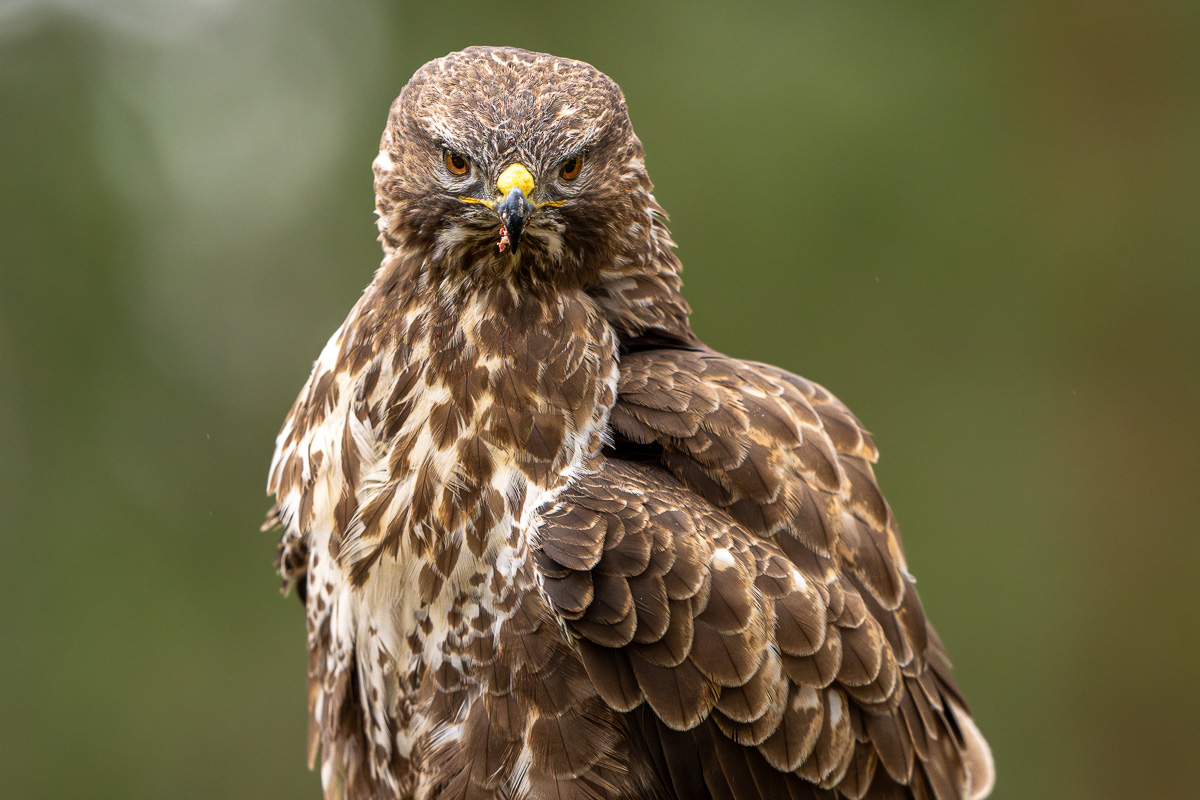COMMON BUZZARD
The Common Buzzard (Buteo buteo) is an impressive raptor with a robust build and a broad wingspan of 110-130 cm. Its plumage is a beautiful mix of brown and white, with a light underside and a dark-striped chest that creates a dramatic contrast. The buzzard migrates south from northern Sweden during the winter months but overwinters in the area around my hides. The combination of its powerful talons, feathered legs, and varied feather colors makes the buzzard a particularly elegant and majestic bird.
Season for Photographing the Common Buzzard
The season for the Common Buzzard extends from November to the end of April. Note that an extension of the season may be possible. All months are generally good for photographing buzzards, though the winter months are the best. During this time, buzzards have also become accustomed to the activity at the photo hides. If you want to photograph buzzards in snow or a frosty landscape, January and February are recommended, but snow and frost can also occur in November, December, March, and April. November is a great time for capturing buzzards in an autumn landscape with red and yellow colors.
Buzzards are very frequent visitors to the hide and feeding station, where they can stay for a long time and eat. The buzzard tends to come daily from autumn through winter and spring. To get the best photographs of the buzzard, two sessions are recommended, but the chance of photographing them in just one session is also very high.
And don’t worry about the cold! The hide has a gas-powered heater to keep you warm.
Camera & Lenses
The choice of focal lengths is up to you; sometimes you might want to get really close, while other times you may want to capture more of the surrounding landscape. I recommend using 400-600 mm for portraits and around 200-300 mm to include more of the environment around the buzzards.
The buzzards come down to a specially constructed platform where bait is placed to attract them. Sometimes they also fly directly down to the ground. The distance from the platform to the hide is about 10 meters, but buzzards often land on one of the small bird feeding stations, which is much closer—only a few meters from the hide. The platforms are mounted on nearby pine trunks and are carefully planned to provide optimal and clean backgrounds. Perches, stones, and other elements are regularly changed to create new environments for photographers.
The hide for buzzards is also equipped with artificial lighting, allowing for fast shutter speeds even during the darkest early morning hours. There is also a water reflection (when it is not frozen) where the raptors can come down to drink—though there is also bait here. You have good opportunities to capture the buzzard in reflection.
Times for Common Buzzard
You should enter the hide about two hours before sunrise (note that this timing may vary depending on the activity of the buzzards). You will leave the hide approximately one hour after sunset.
Things to Bring to the Buzzard Hide
What Else Can You See and Photograph?
Are the Hides Only for Photographers?
You don’t need to be a photographer to enjoy sitting in a hide and observing buzzards and goshawks. It’s a fantastic experience even without a camera. However, the hides are designed with photographers in mind, featuring multiple openings for lenses, mounting equipment, and bean bags. All my hides are carefully planned to provide you with the best angles and the most beautiful backgrounds possible.









